Synthesis
Vacuum synthesis line:
Allows for air and water-free polymerization conditions essential for molecular weight and composition control. The Schlenk line can achieve pressures ~ 1 x 10-3 mtorr and be flushed with inert nitrogen. An oil bath controls the temperature of the reaction.
Rotovap:
A modest vacuum is used to pull solvent off from the reaction mixture which is then condensed on the cooling coils into the receiving flask.
Synthesis bank: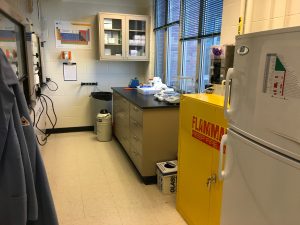
Opposite from the 2 synthetic hoods are a flammable cabinet, fridge, and a bench for weighing reagents and preparing reactions. The window offers clear sightlines to the north of campus.
Vacuum Ovens: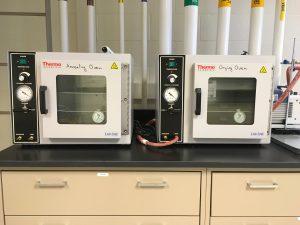
Ovens are used to either dry polymers after synthesis or for providing controlled thermal treatment to thin polymer films (annealing).
Sonication bath: 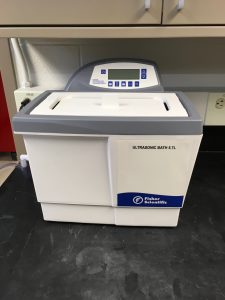
This bath provides sonic energy to help clean substrates or dissolve polymers in solution.
Centrifuge: 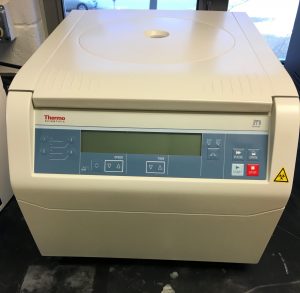
Spins tubes with polymer and solvent at high RPM to separate the mixtures. A useful technique for recovering polymer after precipitation.
Glassware oven: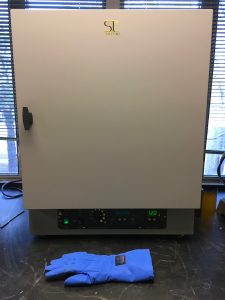
An oven heats glassware so that it is dry and ready to be used for synthesis.
Distilled water dispenser:
For some application, water with absolutely no salt or impurities is required. DI water is also used for dialysis of water soluble polymers to remove trace ions.
Characterization
Hot press: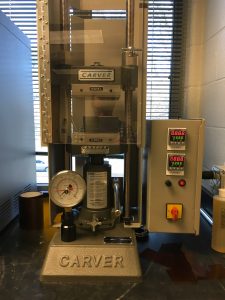
A press with heated plates capable of several tons of pressure can form samples into precise geometries such as disks to be used for further characterization.
(Electro)Rheometer: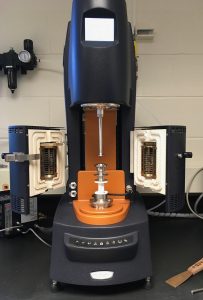
Polymer tend to have properties in between a pure solid or pure liquid. A rheometer lets us quantify this behavior and understand how materials flow. Ours is also equipped with high voltage plates (not shown) which can impact the flow of charged or dielectric polymers.
Spincoater:
Our group is concerned in many cases with interfacial/thin film physics. A spincoater rotates a substrate at high RPM while a polymer solution is placed on top. As solvent evaporates, it leaves a polymer film of controlled thickness and smoothness.
Ellipsometer: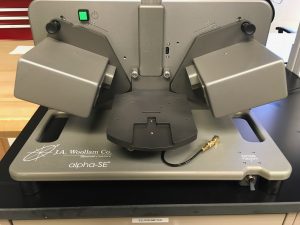
In conjunction with the spincoater, and ellipsometer allows for film thickness determination (and optical constants) for very thin layers.
Fluorimeter: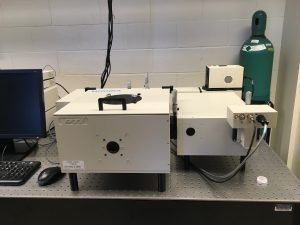
One of our tools for investigating nanoscale resolved physics is fluorescence. A modular system contains the optics and sample chamber as well as capabilities for controlling temperature and pulling vacuum.
Potentiostat:
This 2 channel instrument can perform AC impedance measurements of conductivity or dielectric relaxation spectroscopy. It can also perform standard 3 electrode electrochemical characterization.
Temperature controlled cell: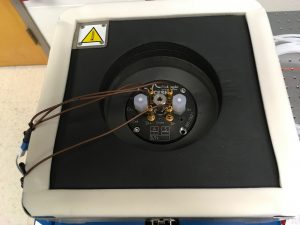
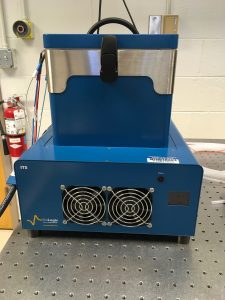
The potentiostat is equipped with a controlled temperature chamber which is also electromagnetically shielded. This allows us to investigate the temperature dependence of polymer relaxations and conductivity to design improved energy materials.
Glove box: 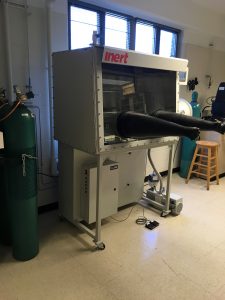
Many reagents are air sensitive and the behavior of charged materials depends strongly on water content. A glove box allows us to work in a dry environment to prepare samples. They can then be transferred to other equipment once sealed.